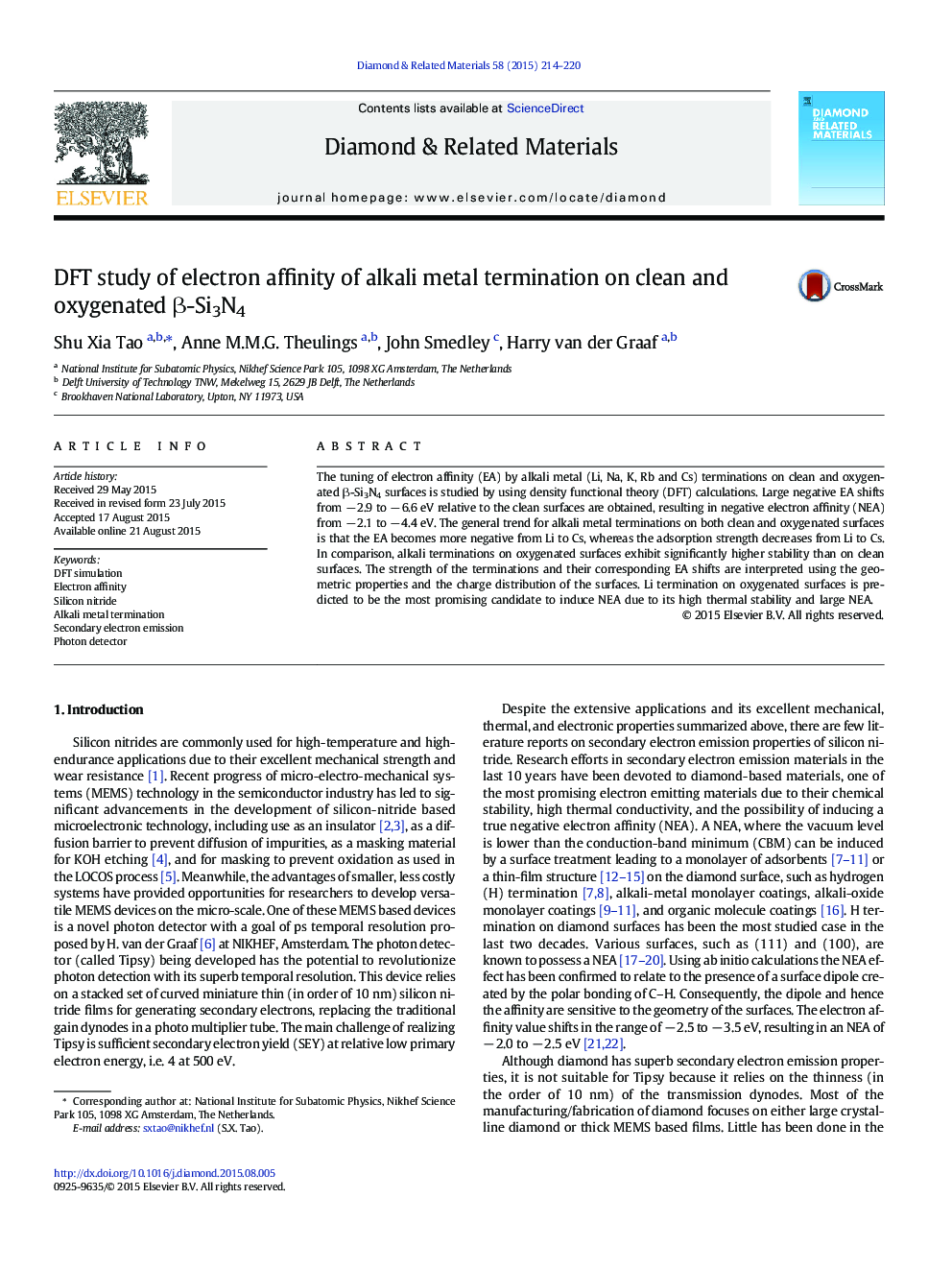| کد مقاله | کد نشریه | سال انتشار | مقاله انگلیسی | نسخه تمام متن |
|---|---|---|---|---|
| 702059 | 1460773 | 2015 | 7 صفحه PDF | دانلود رایگان |

• The paper reports a DFT study of the electron affinity of alkali terminations on clean and oxygenated β-Si3N4 surfaces.
• The general trend from Li to Cs termination is that the EA shift become larger, whereas the termination become weaker.
• The electron affinity shifts is interpreted by the geometric properties and the charge distribution of the surfaces.
• Li termination on oxygenated β-Si3N4 is proposed to be a promising material for electron emission applications.
The tuning of electron affinity (EA) by alkali metal (Li, Na, K, Rb and Cs) terminations on clean and oxygenated β-Si3N4 surfaces is studied by using density functional theory (DFT) calculations. Large negative EA shifts from − 2.9 to − 6.6 eV relative to the clean surfaces are obtained, resulting in negative electron affinity (NEA) from − 2.1 to − 4.4 eV. The general trend for alkali metal terminations on both clean and oxygenated surfaces is that the EA becomes more negative from Li to Cs, whereas the adsorption strength decreases from Li to Cs. In comparison, alkali terminations on oxygenated surfaces exhibit significantly higher stability than on clean surfaces. The strength of the terminations and their corresponding EA shifts are interpreted using the geometric properties and the charge distribution of the surfaces. Li termination on oxygenated surfaces is predicted to be the most promising candidate to induce NEA due to its high thermal stability and large NEA.
Figure optionsDownload as PowerPoint slide
Journal: Diamond and Related Materials - Volume 58, September 2015, Pages 214–220